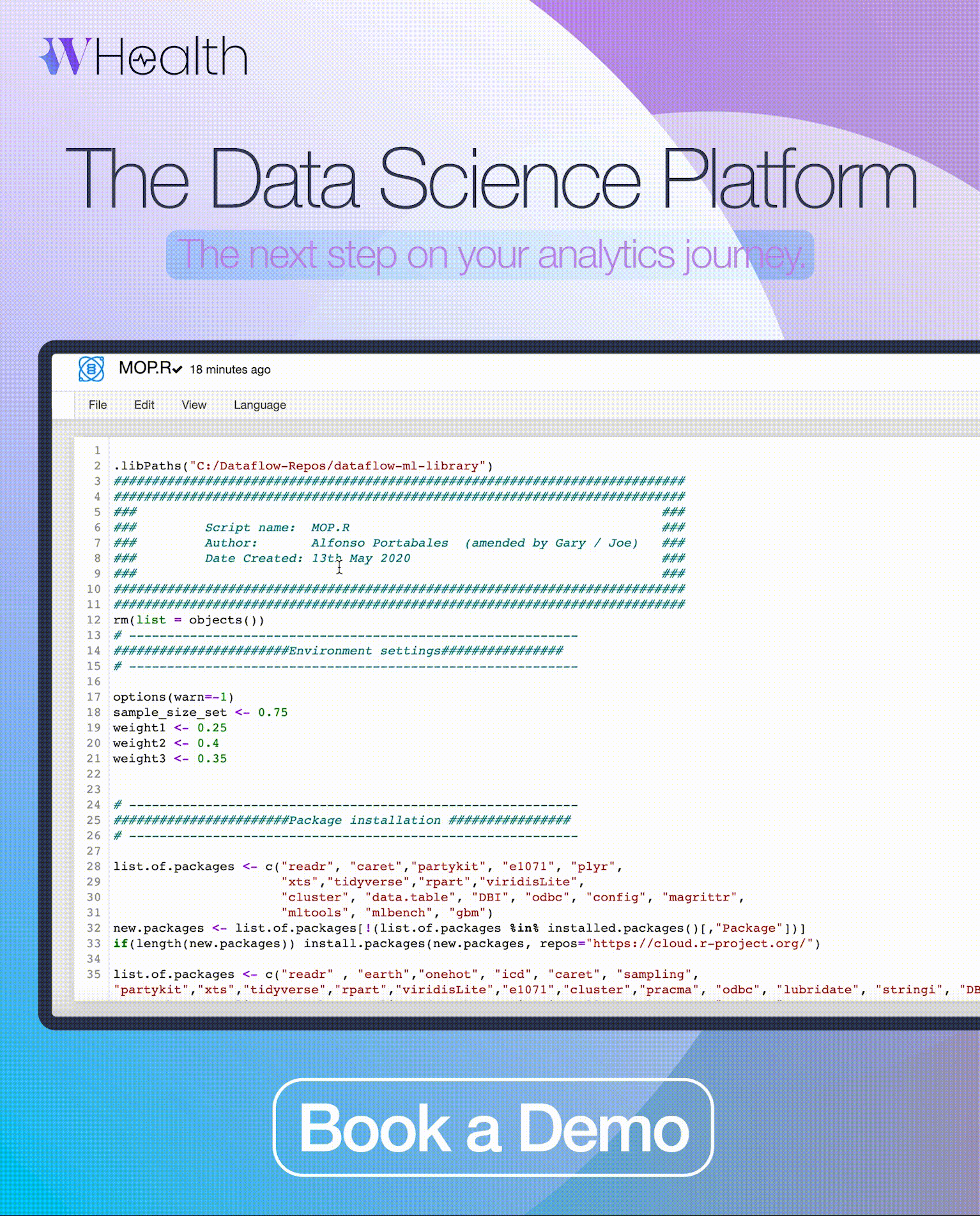‘The purpose of this letter is to request that the Company take steps to achieve a secondary listing on the NASDAQ market in the US in addition to the LSE’s Alternative Investment Market (AIM). We believe this listing will unlock significant value and assist in positioning Sensyne to become a global leader in clinical AI, a field which is estimated to grow 40% per annum to $120 billion by 2028[1] and will fundamentally change drug discovery and shape better global health outcomes.’ wrote Liad Meidar, Managing Partner of Gatemore.
So what exactly is Sensyne Health and what positive impacts does it have in the fields of healthcare and life sciences?
What is Sensyne Health?
As said, Sensyne Health is a clinical artificial intelligence company that provides its services in two markets; Healthcare and Life Sciences. Under these areas, Sensyne operates with the same mission:
‘To improve health and create wealth for all through the ethical application of clinical artificial intelligence and the creation of a trusted data community between patients, clinicians, healthcare providers and life science companies that is transparent, fair and effective.’
Sensyne’s Life Sciences Department
In their Life Sciences department, Sensyne focuses on three aspects; building and protecting large anonymised patient datasets, curating and analysing this using their SENSIGHT algorithm and, lastly, identifying and discovering new insights. Through all of this, they are using machine learning to enhance research and discovery.
The SENSEIGHT algorithm is a drug discovery and clinical development analytics platform. As a real-world data analytics platform, it comprises de-identified and anonymised large data sets across a large number of sources. These sources include partners such as the NHS Chelsea and Westminster Trust. SENSEIGHT is a leading reason behind Gatemore’s initiative of Sensyne’s listing on the NASDAQ:
‘Between the unparalleled patient data set and the nearly complete SENSIGHT platform, Sensyne today is poised to become a global leader in one of the fastest growing segments in healthcare technology. As long-term investors, we are eager to see the Company achieve this recognition in the market, and the key is to put Sensyne in the right venue.’
For its Life Sciences clients, Sensyne acts as a ‘docking system’ between the providers of data such as their fellow partners and their clients who need it to guide medical innovation. An example can be seen in Sensyne’s collaboration with Bristol Myers Squibb UK and Ireland:
‘We initiated in 2020 our collaboration with Sensyne, in the field of Myeloproliferative Neoplasms and Acute Myeloid Leukaemia. The team has been a great pleasure to work with, they are very professional and met our expectations at all levels. Sensyne was able to over deliver in terms of data collected, while sticking to the initial timeline. It was a very fruitful collaboration, and thanks to Sensyne capabilities, we have been able to get meaningful clinical information from a large cohort of UK patients.’ praised Aurélie Ducès, Haematology Medical Director, Bristol Myers Squibb UK and Ireland.
Sensyne’s Life Sciences market continues to drive optimism in drug discovery, clinical trial optimisation, and market access.
Sensyne’s healthcare department
For its healthcare clients, Sensyne creates a comprehensive analysis of de-identified and anonymised patient data using its machine learning, which consequently improves patient care, accelerates the discovery of new medicines, allows for better understanding to treat diseases and reduces research costs.
Sensyne offers remote patient monitoring through their specialised products which improve population health management. They also have research partnerships with UK’s NHS and US-based healthcare firms to create an unparalleled data set which will help optimise healthcare systems:
‘Sensyne collaborates with health systems such as the UK’s NHS, under Strategic Research Agreements to combine Clinical AI with ethically-sourced de-identified and anonymised patient data to help improve patient care, accelerate the discovery and development of new medicines and improve our collective understanding of disease and its treatment,’ assured the company.
One example to refer to when seeing Sensyne’s progress in the Healthcare Department is their mobile application products – specifically, SYNE-COV. Of Sensyne’s 12 mobile apps, SYNE-COV has recently gained recognition for its success in assisting NHS doctors with COVID-19 patients.
Sensyne’s partnership with NHS Chelsea and Westminster Trust has led to the development of SYNE-COV. This is an algorithm platform that helps clinicians predict COVID patient outcomes in hospitals to inform real-time clinical decision making. The algorithm uses three criteria to provide a risk score that aids in the clinical assessment of potential COVID hospitalisation outcomes. These criteria are: the need for intensive care admission, the need for invasive mechanical ventilation, and the risk of in-hospital mortality.
An unpublished clinical validation study has proven the accuracy and sensitivity of SYNE-COV. Using the data of 2,315 people with COVID-19 patients admitted to two hospitals in one NHS trust between 1 January 2020 and 25 December the same year, the study found the following evidence of SYNE-COV’s accuracy:
For its intensive care unit admission, SYNE-COV reached AUC-ROC values of 0.88 and 0.78. It had sensitivity of 84% and 70% respectively and specificity of 78% and 75%. For its mechanical ventilation, SYNE-COV reached AUC-ROC values of 0.91 and 0.68. It had sensitivity of 74% and 47% respectively and specificity of 94% and 84%. And lastly, for its hospital mortality, SYNE-COV reached AUC-ROC values of 0.85 and 0.77. It had sensitivity of 75% and 88% respectively and specificity of 79% and 51%.
This shows that despite one or two low sensitivity and specificity rates, SYNE-COV is overall showing really big potential and optimism for its use in our present time and in the future.
Sensyne’s future
Sensyne’s exploration of a dual listing suggests that the clinical AI company has a bright future ahead. This can be seen in the letter written by Gatemore. The capital management firm Gatemore Special Opportunities has an economic interest of approximately 5.9% in Sensyne Health plc. Their recommendation of Sensyne’s second listing is due to the multiple and immediate benefits it could bring.
Listing on the NASDAQ will provide them with access to deeper pools of capital and potential investors, potentially leading to a higher valuation and higher liquidity. Most importantly, this will lead to broader healthcare-focused research coverage which will consequently create a wider pool of partnerships. This in turn will generate bigger data sets and power continuous improvement of their current healthcare products.
About the Author: Annisa Kumaladewi
Annisa Kumaladewi is a contributing current affairs Features writer. Her expertise lies in current affairs in the Asian diaspora, Indonesian history and World political philosophy.
Recommended for you

Antidepressant Prescribing at Six-Year High
More people are taking antidepressants than ever. Is this a dark sign of the times or an indication that mental health stigma is changing?

Can AI be Used to Determine Cancer Recurrence?
When cancer patients go into remission, they often worry about it coming back. AI can now help identify those at risk of cancer recurrence.

Pegasus – Still a Threat to the UK?
The notorious Pegasus spyware has been misused to exploit vulnerabilities in devices, even those kept within the walls of Number 10.
Trending

Drug Decriminalisation: Could the UK Follow Portugal?
Portugal’s drug decriminalisation has reduced drug deaths and made people feel safe seeking support. Would the UK ever follow suit?

Calling All Unvaccinated UK Adults
With Covid cases rising, the NHS is urging the 3 million UK adults who remain unvaccinated to come forward.




